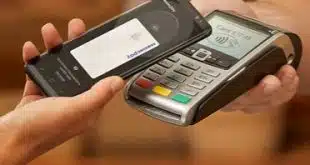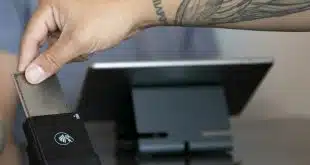By John Stewart
The Durbin Amendment’s transaction-routing requirements, which have been in effect now for three years, are widely thought to have benefited merchants by increasing competition for debit card traffic. But PIN debit networks that aren’t owned by Visa Inc. and MasterCard Inc. were expected to benefit as well by taking volume from the two major brands. And now there’s research that shows just how much share they grabbed.
PIN-debit networks like Star, NYCE, Shazam, and Pulse collectively enjoyed an average annual transaction growth rate of 24% between 2010 and 2013, from 5 billion to 9.5 billion. And they saw their share of PIN traffic soar from just under one-third to slightly more than half, according to a report released Friday by First Annapolis Consulting, an Annapolis, Md.-based payments consultancy.
By contrast, Interlink and Maestro’s combined volume shrank at an average annual rate of 5%, from 10.5 billion to 9.1 billion, according to the research. By the end of 2013, they were processing 400 million fewer transactions than their rival PIN-debit networks.
Durbin’s effect was immediate, which can be seen in the year-to-year numbers. The non-Visa, non-MasterCard networks racked up a growth rate of 21% from 2010 to 2011, but then saw 58% growth from 2011 to 2012 after the law's routing rules took effect in April 2012.
The figures used in the study are derived from a Federal Reserve report that extended through 2013, Frank Verhaegen, an associate at First Annapolis and author of the study, tells Digital Transactions News. Fed data for 2014 are not yet available.
Under Durbin, which became law as part of the 2010 Dodd-Frank Act, issuers must offer at least two unaffiliated networks on the debit cards they issue. That rule broke up a number of long-settled deals by which major issuers had combined Visa and Interlink, or MasterCard and Maestro, on the same card, effectively leaving merchants with no choice in routing.
As a result, Visa in particular sustained a huge loss of PIN debit volume. By the middle of 2012, for example, Interlink’s dollar volume had shriveled by 54% in one year. At the time, many experts thought the Maestro network, which had been a high-profile player overseas but a relatively small factor in the U.S. market, would be the biggest beneficiary. Indeed, MasterCard reported in mid-2012 that it was realizing gains in debit volume, but it did not break out its results by authentication method, signature or PIN.
First Annapolis’s study indicates that if Maestro did gain from Durbin, it may have picked up far less than the non-Visa, non-MasterCard networks. Verhaegen says the Fed data allowed a look at combined Interlink/Maestro results, but did not permit dividing the two to check results separately. “It likely is the case that Interlink took a bigger hit than Maestro,” he says.
But already there are signs the two global brands are staging a turnaround in U.S. PIN debit, despite Durbin. While the Interlink/Maestro combination in 2012 saw its transaction count shrink by 22%, it was able to post a 6% increase for 2013, according to the report. And that eye-popping 58% growth rate the competing networks achieved in 2012 turned slightly negative in 2013. In terms of market share, the Interlink/Maestro combo increased from 47.3% to 48.8%, while the all-others group fell from 52.7% to 51.2%.
Some experts estimate Visa and MasterCard have managed to recover most, if not all, of their pre-Durbin volume. Visa's Interlink, in particular, has “clawed a lot of it back,” says Eric Grover, who follows payments as principal at Intrepid Ventures, Minden, Nev. “Today Visa and MasterCard have roughly the same or slightly greater PIN-debit share than they had collectively pre-Durbin,” he tells Digital Transactions News via email.
Verhaegen credits the big networks’ ability to sign routing deals with major merchants to lock in volume. At the same time, he says, Visa’s PIN Authenticated Debit (PAVD) program, under which the network handles PIN traffic on its backbone network, has also helped stabilize market share for the brand.
Next, the arrival of PIN debit on the EMV chip protocol, expected later than the advent of EMV credit, could create fresh disruptions in the PIN-debit market, Verhaegen says, though it is hard to predict at this moment how it will affect the network players.
While most of the networks have agreed to use PIN-debit EMV solutions from Visa or MasterCard, that will not likely give the two big brands an advantage, says Melissa Fox, a manager at First Annapolis who also follows the debit market. “[Routing] choice is still going to lie with the merchant,” she tells Digital Transactions News. “Merchants will retain control.”




